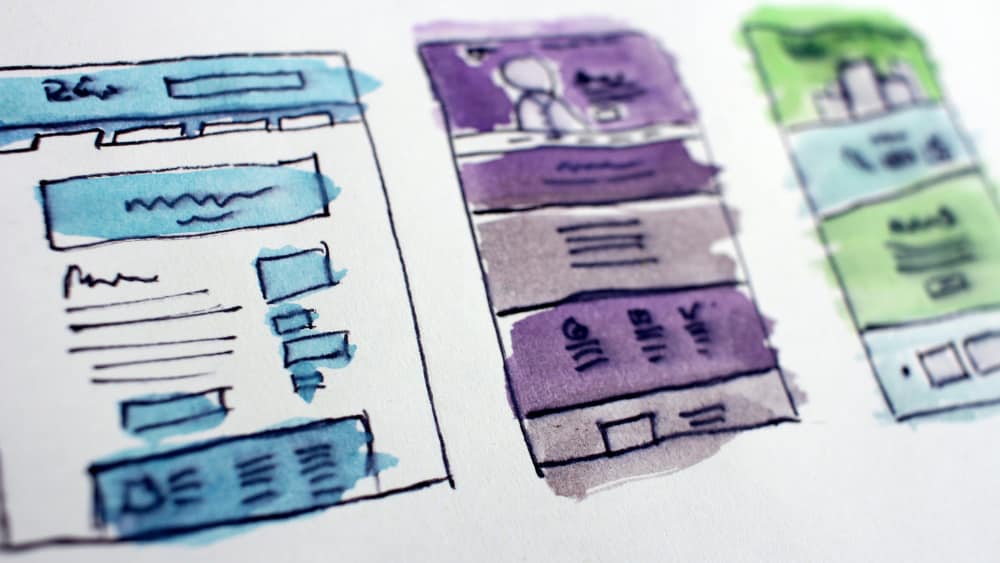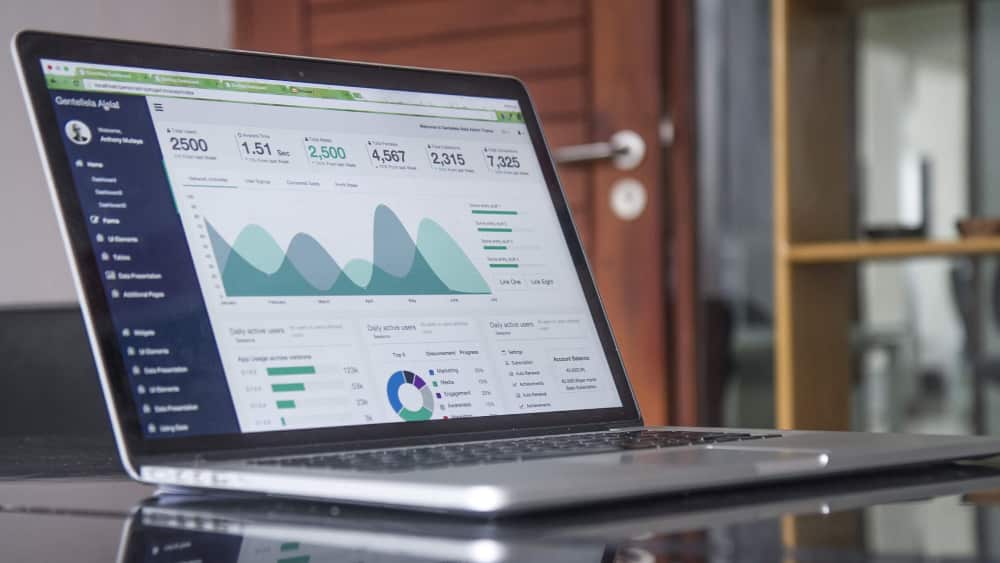This article has been contributed by Stephanie Jones.
It’s really disheartening to build a landing page, publish it, and then get only a couple of conversions.
You spent hours crafting your copy and designing everything. You sent it out to your email list, paid for ads, and yet you’re still not seeing results.
As with most marketing work, there is an art to creating effective landing pages. It’s not just about attractive design and clean copy; the audience insights, user experience, and value proposition have to be there as well.
Still not sure how to take your landing page to the next level? Take a look at these ten tips:
1. Research Your Audience (Again)
Every decision you make about your landing page, from its title to its footer, needs to be based on what you know about your target audience. Even if you’ve conducted research in the past, audiences change; it never hurts to collect fresh data.
First, you need to understand what your audience’s pain points are. Otherwise, how are you going to convince them that your whitepaper or email marketing is worth their time? All good products and services solve a problem, so be sure to weave this into your landing page.
Don’t just pay attention to the problem itself, though. How does your audience speak about it? Why haven’t other solutions worked for them? What psychological triggers get them to pull the trigger on a purchase?
There are several ways you can research your audience:
- Interview existing customers, especially those that have been loyal to your business.
- Convene a focus group to encourage a conversation among your customers.
- Send out a survey to your email list.
- Use lookalike audiences on social media to fill in demographic gaps.
Think, too, about how they interact with your landing page. For example, you can use heat maps to see where your visitors are clicking. If you notice a link is causing visitors to leave the page, consider removing it altogether. The more you know about who your audience is and how they interact with your page, the better.

2. Make the Most of Content Above the Fold
The material at the top of your landing page is what gives visitors their first impression. In some cases, they’ll look at only the title and header image to decide whether or not the page is worth their time.
Make sure your above-the-fold content:
- Clearly explains your offer: Why are readers there in the first place?
- States the benefit: How is your solution better than their other options?
- Uses white space wisely: A breathable layout provides a better user experience than a jumbled, confusing one.
- Includes a call to action: CTAs shouldn’t only sit at the bottom of the page, where some readers will never see it.
By the same token, notice what’s not included above the fold. Elements like testimonials or specific features should be mentioned further down the page. Although these are valuable, they’re not as important to your audience as your offer and sign-up form.
3. Get Specific About Your Value
Don’t leave any doubt in your reader’s mind about why they need your product or service. Otherwise, they may not feel compelled to click or enter their email address.
You want to avoid two big mistakes here: One, never promise something you can’t deliver. People hate clickbait and being led on. Even if you land a few sales by doing so, your brand will suffer in the long run.
The second mistake is hiding your value in the details. Don’t make your visitors dig around your website for the information they need. Think about not just what you offer, but to whom and why.
Say you’re a data security consultant. You’ve done a good job of describing what you do and what cybersecurity risks you can help clients minimize — but who do you serve? A startup’s IT needs are drastically different from an established enterprise’s.
Don’t do that to your customers. Hit the who, what, when, why and how, ideally in the first 250 words on the page.
4. Use Fewer Form Fields
When it comes time to get your visitors’ information, it’s tempting to ask for everything but the kitchen sink. Why wouldn’t you want to collect things like their age, gender, race and household income? The more you can learn about your landing page visitors, the better — right?
Personal information is valuable to people. You need to build trust with them before you ask for those sorts of details.
Remember, your landing page is essentially making a trade: You give them something of value, like a whitepaper or discount, and they agree to receive your marketing messages.
The bottom line is, the more you ask for, the less likely people are to convert. That’s why one of the best ways to boost your landing page’s effectiveness is simply to reduce the number of fields your readers have to fill out.
Ask yourself what, exactly, you need to know. Although many landing pages ask about company size and title, inbound marketing agency HubSpot suggests limiting requests to name and email.
5. Write Clear and Concise Headlines
When it comes to landing pages, headlines are everything. There are a lot of wrong ways to write one, including:
- Using jargon or lofty phrasings: “We specialize in synergistic optimization solutions.”
- Using vague phrases that could be talking about anything: “Looking for the lowest price? We guarantee it!”
- Being unnecessarily wordy: “Make a lot more money than you probably are right now just by driving your car.”
- Being too brief: “Earn more by driving.”
Bad headlines distract and confuse readers. Your goal should be to summarize your landing page’s value in an attention-grabbing way. Readers don’t see a good headline, so much as they see your offer through the headline.
What makes a good landing page headline? Think about it like a blog post headline: Be accurate, conversational and brief. Speak to your audience’s needs, and tease the top benefit of your product or service.
6. Craft a Strong Call to Action
Part of the battle is bringing visitors to your landing page. Once they’re there, the challenge becomes motivating them to take the next step. That’s where a strong CTA comes into play.
Here are some best practices to implement:
Make Your CTA a Contrasting Color
You want the CTA to stick out. For example, if your background is light green, make the CTA a dark orange. If your brand’s style guide calls for particular colors, pick the boldest and the brightest for your CTA.
Put Your CTA Above and Below the Fold.
By locating your CTA atop the page, you capture readers who are eager to take that next step. But by also placing one at the bottom of your landing page, you’ll capture those who are convinced by reading its other content.
Alternatively, use an element that follows the reader along the page. Not only does motion catch the eye, but it lets readers sign up the moment that they’re convinced of your product or service’s value.
Use Enticing Language
Your CTA shouldn’t be something boring, like “Submit.” Use phrasings that create urgency, such as “Shop Now,” or those that imply a good value, such as “Download for Free.”
Above all, experiment. Every landing page looks a little difference because every audience and business is different. Naturally, it might take some trial and error before you discover the CTA that maximizes your conversion rate.

7. Cut Out Distractions
Isn’t flashy design and copy better for a landing page? Not necessarily. If you go overboard, you could hurt your conversion rate. When you introduce too many elements, you take your audience’s attention away from your offer.
There’s a delicate balance to be had. Landing pages need some amount of design and copy, of course. Think about it in “goldilocks” terms: Too much or too little of either, and you’ll see conversions fall off.
If your landing page is littered with distractions, what should you cut out? Good options include:
External Links
You don’t want visitors leaving the page without signing up, so why include them at all?
Navigation Tools
Assume readers can scroll up and down the page themselves.
Images and Video
Images and video catch the eye. If you don’t need one to deepen the reader’s understanding of what you do or to promote sign-ups, then why include it at all?
8. Include Social Proof
How often do you read reviews before hitting the “Buy” button? Before people buy from you, they need to trust your brand.
You can immediately build that trust by including social proof on your landing page. If you’re not familiar with social proof, it’s the idea that a brand is good if other people like it.

Generally speaking, people follow the masses. If you can show visitors that the masses like your business, they’ll join the crowd.
Social proof takes many forms, such as:
- Third-party reviews from websites like BBB and Yelp
- Case studies
- Customer testimonials
- Endorsements from celebrities and influencers
- Social media follower figures
- Awards, certifications and recognitions
- Logos of big brands that use your services
Once you’ve identified a form of social proof, consider where it should sit on your landing page. For instance, a testimonial about how easy it is to get started might be best next to your sign-up form. One that reinforces your service’s quality should probably be near its value proposition. Use social proof to underscore benefits and minimize perceived pain points.
9. Align Your Ad Copy and Landing Page
Imagine seeing an ad for bartending classes. When you click through to the landing page, however, you see that the company has pivoted to cooking classes. Chances are, it isn’t a pleasant surprise.
A surprising number of companies make this mistake. As their service offerings change, they often forget to update their marketing materials.
It’s critical to meet the expectations you set for your customers. If your landing page doesn’t match what they saw in a social media ad, they’ll leave instantly.
Leave no stone unturned here. Ensure that your ads and landing pages cover the same services and use cases. Check that their copy strikes the same tone. Use the same color scheme. Make sure the faces in each image reflect your audience.
This ensures that everyone who clicks on your ad knows precisely what they’re getting into. The result is more pre-qualified traffic to your landing page, which ultimately means higher conversions.
10. A/B Test Everything
All of these tips and tricks can help you build better landing pages. But the truth is, you won’t know what works and what doesn’t until you test it. A lot of marketing advice applies generally, but very little of it works universally.
To discover the best version of your landing page, get ready to do round after round of A/B testing. Marketing automation agency Ontraport suggests creating four versions at a time to make the process more efficient.
When you test, isolate variables by focusing on a single element at a time. Don’t vary both the photos and the text in a single test, for example.
A few places to try A/B testing include:
● Social Proof
Do value-oriented testimonials convert more leads than quality-focused ones? Should the case study go higher on the page or lower?
● Titles
Is a longer title more effective than a shorter one? Is a question better than a statement?
● Colors
Is it better to provide reassurance with calming colors like blue? Or do colors like red, which communicate passion, convert more visitors?
● Tone
Do visitors respond best to a casual style? Might a more formal one boost conversions by conferring a sense of authority?
Keep track of your findings, and don’t be afraid to run the same test twice. You never know whether the first run’s results were due to sample irregularities, or whether some other variable was influencing them.

Get it right, and you’ll see: Landing pages can be lead-generating, money-making machines. Unfortunately, they’re also easy to botch. Test, redesign and optimize your way to a landing page that your audience can’t resist.
_
About the author: Stephanie Jones is the Editor-in-Chief of Personal Branding Blog and writes for a variety of major media outlets.
No comments:
Post a Comment